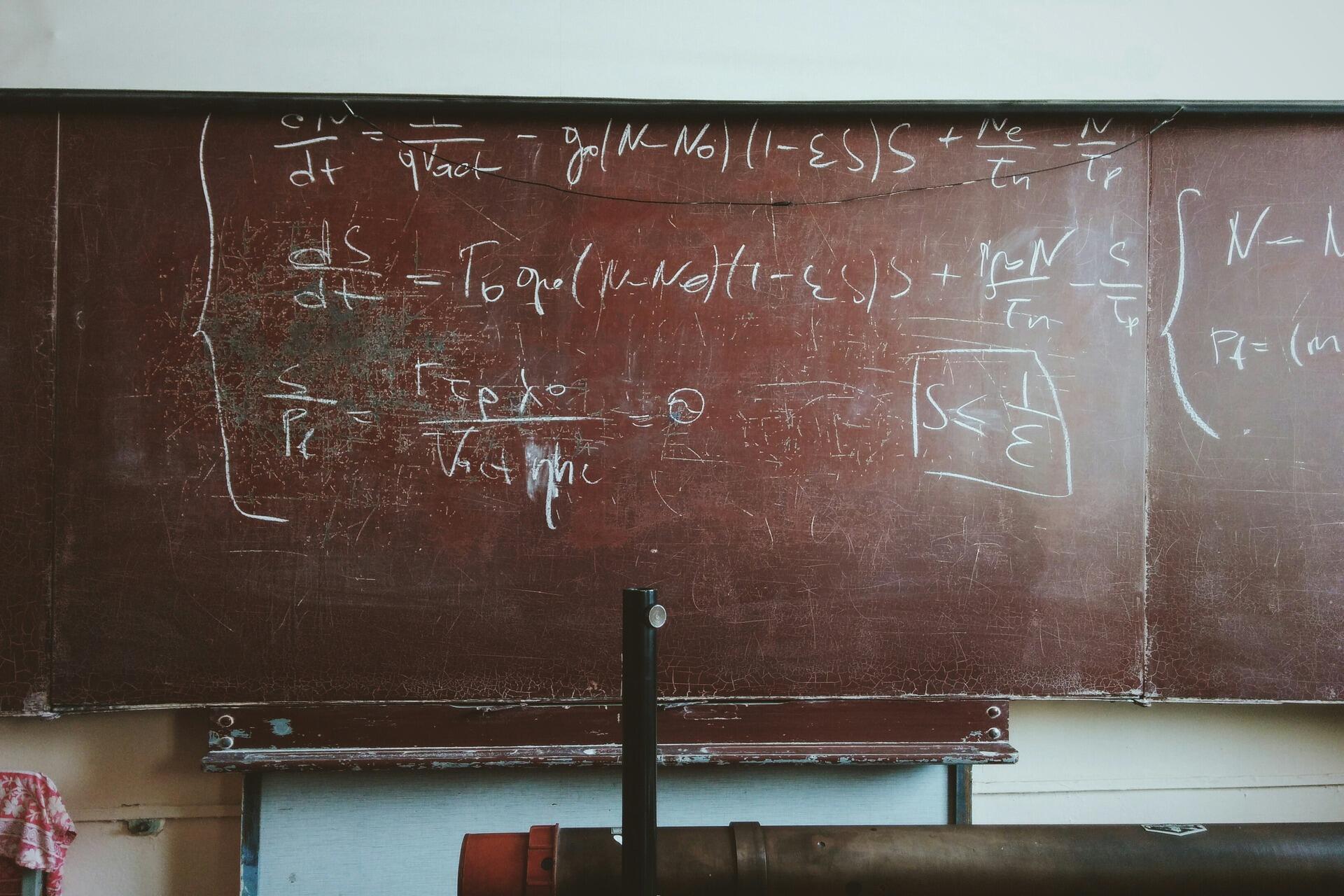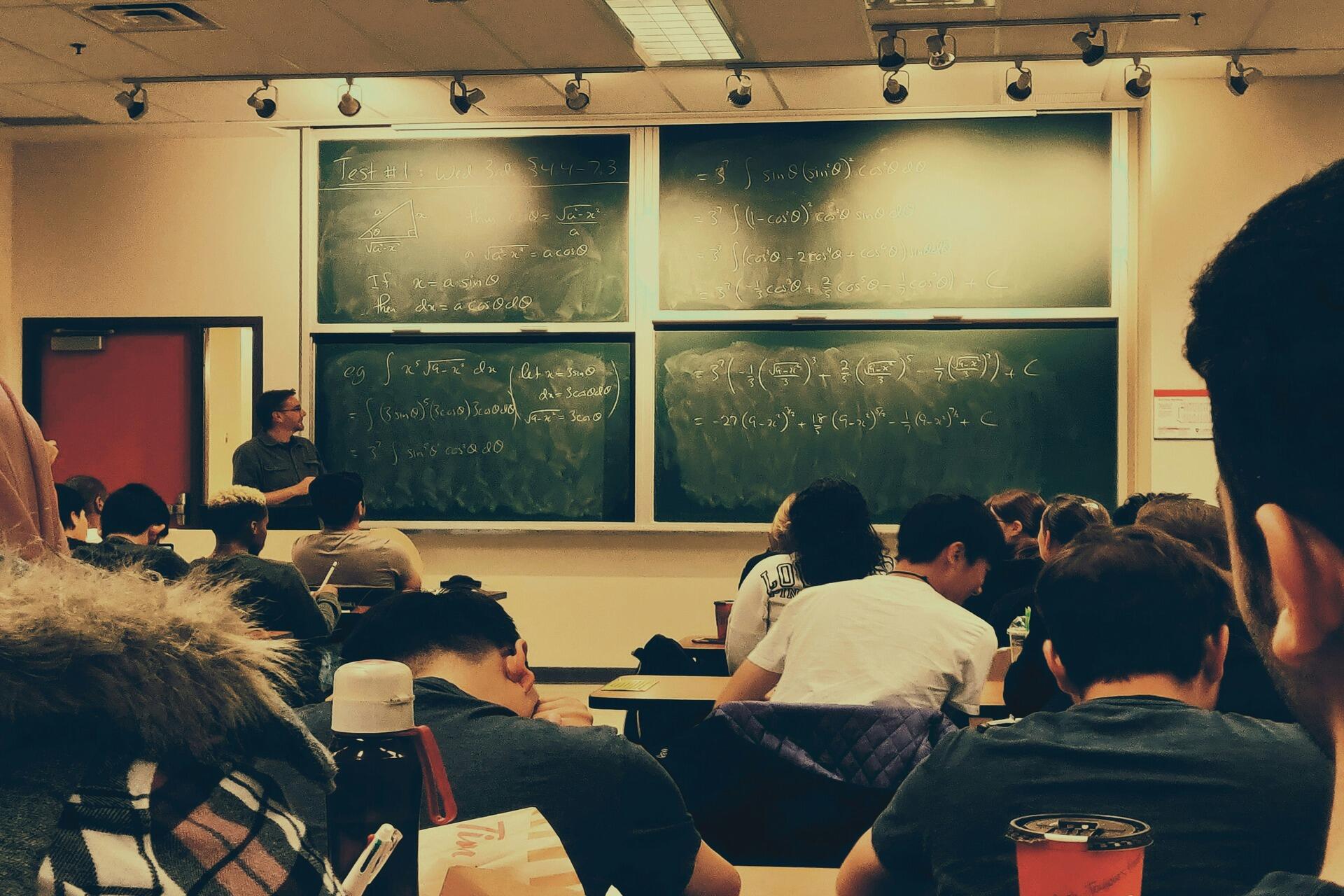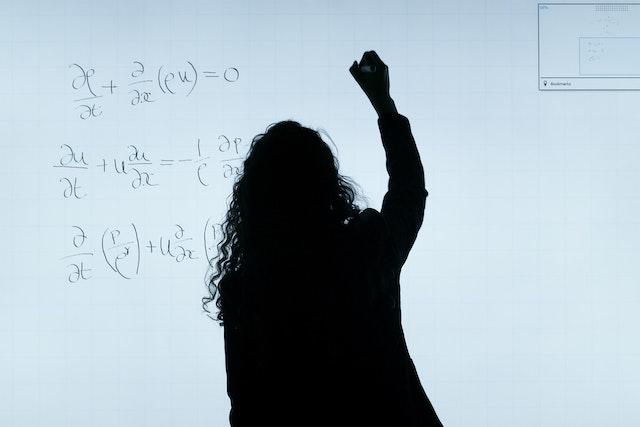Mathematics is a fundamental subject that forms the basis for many other fields of study, such as engineering, physics, economics, and computer science. By studying maths in STPM, you can build a strong foundation of mathematical knowledge that will be useful in many areas of higher education.
You entered Form Six with a strong determination to excel in your STPM Maths. Studying maths in STPM can help you develop critical thinking and analytical skills. These skills can be applied to many different situations, both in academic and professional settings. However, after a few lessons in school, you realised that the difficulty level of the subject is significantly higher than what you were used to in SPM.
You might even feel that Additional Mathematics, which used to be a challenge, seems much easier now. Don't worry, though, as everything is difficult before it becomes easy. You can still achieve your goal of acing your STPM Maths paper by adopting the right strategies and studying techniques.
To kickstart your learning journey, let's explore some effective study tools, such as the right revision books and practice exercises, including past year questions.

Is STPM Maths a Difficult Subject?
The STPM Mathematics subject is regarded as challenging by many students due to its complex and abstract nature. The subject requires a deep understanding of mathematical concepts and strong problem-solving skills. It covers a wide range of topics, including calculus, algebra, geometry, and statistics, and requires students to have a solid foundation in mathematics.
Additionally, STPM Mathematics involves higher-order thinking skills, which require students to not only understand mathematical concepts but also apply them to unfamiliar scenarios. This can be particularly challenging for students who are not naturally inclined towards mathematics.
Moreover, STPM Mathematics is a subject that requires consistent practice and revision. Students need to spend a considerable amount of time solving problems and practising mathematical concepts to develop a strong understanding of the subject. This can be time-consuming and demanding, especially for students who are juggling other subjects and extracurricular activities.
However, despite its difficulty, STPM Mathematics is a highly rewarding subject for those who are willing to put in the effort and dedication required. It provides a strong foundation in mathematical concepts that can be applied to a wide range of fields, including science, engineering, and finance. Additionally, a good grade in STPM Mathematics can open up many opportunities for students, including admission to top universities and prestigious courses.
Although it can be demanding, it is a highly rewarding subject that provides valuable skills and opportunities for students. With the right mindset and approach, students can overcome the challenges of STPM Mathematics and achieve success in their academic and professional pursuits.
If you are pursuing the Science stream in STPM, then mathematics is a compulsory subject for you. If you are in the Arts stream, this subject is optional. Choose your stream based on your end goals. What course do you want to pursue in your tertiary education? Does it require STPM Mathematics? To better understand how the system works and what each stream entails, you can explore STPM in detail.

An Overview of Maths M STPM for Pre-University Students
The Maths M STPM paper, formally referred to as Mathematics (M), is a specialised subject designed for pre-university learners in Malaysia. It caters primarily to students aiming to pursue courses in economics, finance, management, and the social sciences. Unlike Mathematics (T), which is intended for those moving into engineering or science-based fields, this syllabus places greater emphasis on practical mathematics relevant to decision-making, business applications, and statistical reasoning.
The subject is divided into three semesters, reflecting the modular system adopted under the new STPM format. Each semester introduces fresh content, organised into well-defined chapters. The progression is deliberate, moving from foundational algebraic tools into more applied areas such as statistics and financial mathematics. By the final term, students are expected to demonstrate competence in analysing a graph, interpreting data, and applying formulas to real-life financial or business scenarios.
Key Elements of the Maths M STPM Paper
Structured Semester Delivery
The course runs over three semesters, with each stage building on knowledge gained previously. In Semester 1, learners are introduced to algebra, functions, linear equations, and series. These form the groundwork for later topics. Semester 2 develops skills in probability, statistics, and distributions, while Semester 3 focuses on financial mathematics, such as interest calculations, annuities, and matrices used in business models. This tiered approach helps students gradually adapt to increasingly complex material.
Practical Orientation of the Syllabus
One defining feature of Mathematics (M) is its emphasis on real-world problem-solving. Students learn how to determine a solution to a financial or statistical question by applying mathematical reasoning. For example, they may be tasked with finding the present value of an investment using integration or modelling a set of outcomes in a probability distribution. Such applications highlight the subject’s practical relevance and encourage learners to see mathematics as more than abstract theory.
Integration of Core Mathematical Tools
Core topics include algebraic manipulation, equations, matrices, functions, and series. These are essential for handling real-life problems where multiple variables interact. The ability to simplify an equation or interpret the slope of a line on a graph allows students to analyse management-related problems. Later, statistical concepts such as hypothesis testing and regression give students further tools to examine and evaluate data in depth.
In the 2021 STPM examinations, approximately 32% of candidates sitting for Mathematics (M) achieved a full pass rate, based on official data from the Majlis Peperiksaan Malaysia (MPM).
Balance Between Quantitative Rigour and Accessibility
Although Mathematics (M) does not extend into the deeper pure mathematics seen in the T stream, it still requires careful reasoning and precision. Students are expected to write clear, logical solutions that demonstrate understanding rather than rote memorisation. The syllabus is designed to be rigorous but accessible, ensuring that learners from a range of academic backgrounds can engage with the material successfully.
Assessment and Coursework Elements
Each year of study culminates in written examinations that assess both problem-solving and conceptual understanding. In addition, coursework forms part of the assessment structure. Tasks may involve analysing a sample of statistical data, modelling numbers, or applying financial principles to a case study. These projects encourage students to explore mathematics in an applied, contextual manner, reinforcing classroom learning.
Relevance to Future Studies
The purpose of the subject extends beyond exam achievement. By engaging with themes such as probability, financial modelling, and statistics, learners acquire skills directly applicable to university-level courses in business administration, economics, finance, and management. For example, the ability to interpret the image of a statistical distribution or to calculate a break-even point gives students a solid foundation for disciplines where quantitative analysis is critical.
Connections Across Topics
An important aspect of Maths M is the way topics interconnect. For instance, understanding functions is necessary when modelling a demand curve, while skills in integration are applied in financial contexts. Similarly, knowledge of matrices provides a method of solving simultaneous equations, which may later be linked to decision-making in resource allocation. This thematic coherence helps learners see how mathematics underpins a variety of real-world processes.
The Maths M STPM paper is more than a standard mathematics subject; it is a comprehensive programme tailored to prepare Malaysian pre-university students for higher education in management, economics, and the social sciences. Its syllabus combines fundamental algebraic concepts, equations, and functions with applied themes such as probability, integration, matrices, and financial mathematics. Delivered over three semesters, it strikes a balance between theoretical knowledge and practical application, equipping students with tools to handle complex questions and derive meaningful solutions.
By mastering each chapter and engaging with both coursework and examinations, learners build not only academic competence but also transferable skills that will serve them in future professional and academic settings. For those aiming to excel further, exploring tips to score in STPM can provide effective strategies to complement classroom learning.
Ultimately, Maths M STPM provides a solid bridge between secondary education and the analytical demands of university-level study, reinforcing the importance of mathematics as a practical and indispensable discipline.

How to Approach Maths T STPM with the Right Study Methods
The Maths T STPM paper is a demanding subject aimed at students planning to pursue degrees in engineering, computer science, and the physical sciences. It contains both pure and applied mathematics, covering a broad range of concepts such as functions, equations, linear algebra, probability, and integration. Because of its technical nature, many students find it challenging to master within the limited time available across three semesters.
Approaching this subject requires not just memorisation but also a structured plan that blends conceptual understanding with consistent practice. Each chapter builds on the previous, so keeping pace with the syllabus is critical. With the right methods, students can learn how to evaluate a graph, solve a complex equation, or determine the correct solution to a technical question confidently.
Effective Study Methods for Maths T STPM
Understand the Structure of the Subject
The syllabus is divided into three teaching terms, each with a set of core topics. In the first year, concepts such as algebra, functions, and series are introduced. Later, students encounter calculus, differential equations, and integration. In the final stage, advanced ideas like numerical methods and mechanics are explored. By recognising this flow, students can link ideas and prepare systematically.
Focus on Conceptual Clarity
To succeed in Maths T, students must go beyond memorising formulas. For example, understanding how a function behaves on a line or graph allows learners to visualise the value of a given point rather than just substituting numbers. This conceptual approach ensures flexibility when facing unfamiliar problems.
Practice with Past Papers
Solving past paper questions helps students anticipate the style of questions and the depth of explanation expected. Working through a sample set of problems also highlights common areas where mistakes are made. By reviewing official marking schemes, learners can see how a complete solution should be written and avoid repeating errors.
According to the Majlis Peperiksaan Malaysia (MPM), the STPM Mathematics T formula list is provided during the actual examination. This ensures all candidates have equal access to key formulas, reducing the burden of memorisation and allowing the focus to remain on applying concepts to solve problems.
Step-by-Step Problem Solving
Writing out each step clearly is essential when tackling equations, linear systems, or integration problems. Examiners award marks for correct reasoning even if the final value is not achieved. Students should always write each stage of their thinking rather than skipping steps. This habit builds precision and also reduces careless mistakes.
Apply Mathematics to Real Situations
Topics such as probability and mechanics often appear abstract, but are easier when connected to real-world examples. For instance, using probability to calculate outcomes in a sample survey or applying mechanics to motion along a straight line makes concepts more relatable. This practical approach deepens understanding.
Make Use of Visual Learning
Diagrams, charts, and images are powerful tools for subjects like Maths T. A correctly drawn graph can reveal the nature of a function or the slope of a line instantly. Visual representation is especially useful in integration and differential equations, where it provides context for abstract results.
Consistent Revision and Reflection
Instead of cramming at the end of a term, regular revision is far more effective. Revisiting earlier chapters prevents the need to repeat entire sections later. Reflection also helps identify weak areas, allowing students to open their notes, review worked examples, and seek additional help if required.
Approaching Maths T STPM effectively requires structured preparation, clarity of concepts, and steady practice across all semesters. By focusing on the flow of the syllabus, engaging with past papers, and carefully writing each step of their solutions, students can face even the most complex questions with confidence.
At the same time, being familiar with the exam format and marking scheme helps learners understand how answers are graded and the importance of showing clear working steps. The ability to interpret a graph, solve equations, and apply methods like integration will not only lead to exam success but also provide a solid foundation for university-level mathematics.
Ultimately, the subject rewards persistence and logical thinking. With a balance of theory, practice, and application, learners can build the competence needed to excel in both their exams and their future studies.


Essential Guide to the STPM Mathematics T Formula List
The STPM Mathematics T Formula List is one of the most important tools for students preparing for this pre-university subject. It provides quick access to essential mathematical relationships, saving time during exams and helping learners recall critical concepts more efficiently. Understanding what is included in the formula list and knowing how to apply it properly can significantly improve problem-solving accuracy and boost confidence.
The formula list is not designed to replace learning but to serve as a support. Students are still expected to understand the underlying principles behind each formula, as exam questions often require interpretation and application rather than direct substitution. Below is a structured overview of the key areas covered in the STPM Mathematics T Formula List and how they can help students.
Algebra and Functions
The formula list includes key relationships for polynomials, exponential and logarithmic functions, and trigonometric identities. These are fundamental in solving a wide range of problems, from simple manipulation to advanced applications. Knowing where these appear in the formula list can reduce stress in exam settings, especially when dealing with complex transformations of functions.
Calculus
Differentiation and integration formulas form a major part of the list. Students are provided with basic rules, such as the product, quotient, and chain rules, along with standard integrals. However, while the formulas are given, the skill lies in recognising which technique to apply to a particular question. Practising with the formula list in hand ensures fluency when under time pressure.
Vectors and Geometry
The list provides essential vector operations such as dot product, cross product, and equations of lines and planes. These tools are crucial for interpreting three-dimensional problems, particularly in mechanics or spatial reasoning questions. By using the formula list effectively, students can focus on building a logical solution path rather than recalling lengthy vector properties.
| Topic | Formula | Notes |
|---|---|---|
| Quadratic Equations | ax² + bx + c = 0; x = [-b ± √(b² - 4ac)] / 2a | Standard quadratic formula for solving equations. |
| Arithmetic Series | Sₙ = n/2 [2a + (n - 1)d] | Sum of n terms in an arithmetic sequence. |
| Geometric Series | Sₙ = a(1 - rⁿ) / (1 - r), r ≠ 1 | Sum of n terms in a geometric progression. |
| Binomial Expansion | (x + y)ⁿ = Σ (nCr)(x^(n-r))(y^r) | Binomial theorem for expansion. |
| Logarithms | logₐ(xy) = logₐx + logₐy; logₐ(x/y) = logₐx - logₐy | Laws of logarithms. |
| Differentiation | If y = f(x), dy/dx = f'(x) | Basic differentiation rule. |
| Integration | ∫ f(x) dx = F(x) + C | Indefinite integration with constant of integration. |
| Probability | P(E) = Number of favourable outcomes / Total outcomes | Classical probability definition. |
| Statistics | Mean = Σx/n; Variance = Σ(x - μ)² / n | Basic descriptive statistics formulas. |
| Matrices | If A is a matrix, det(A), A⁻¹ = adj(A)/det(A) | Matrix determinant and inverse. |
Probability and Statistics
Probability rules, distributions, and statistical formulas such as mean, variance, and standard deviation are also included. This section of the formula list is particularly helpful as it reduces the need to memorise less intuitive expressions. Students can instead concentrate on understanding data interpretation and applying statistical reasoning to solve exam-style problems.
Sequences and Series
Arithmetic and geometric progressions, along with the sum of series, appear prominently in the formula list. These concepts are highly examinable and often form the foundation for structured problem-solving. The formula list acts as a reminder of the correct forms, ensuring students do not lose marks due to small errors.
Matrices and Linear Algebra
The basics of matrix operations, determinants, and inverse matrices are covered. These are critical for solving simultaneous equations and for applications in transformations. With the formula list, students have quick access to the fundamental operations needed to structure solutions correctly.
The STPM Mathematics T Formula List is more than just a set of equations—it is a guide that supports efficient and accurate problem-solving. Students who familiarise themselves with the list during practice can save valuable time in exams, reduce stress, and avoid unnecessary errors. It is important to remember, however, that the formula list complements learning; true success in STPM Mathematics T comes from understanding the concepts deeply and applying them effectively. By integrating the use of the formula list into everyday revision, students place themselves in a stronger position to achieve excellent results. By integrating the use of the formula list into everyday revision and combining it with proven revision techniques for the STPM, students place themselves in a stronger position to achieve excellent results.

STPM Maths Past Year Papers
Preparing for STPM Mathematics requires consistent practice and a strong understanding of the exam format. One of the most effective tools students can use is past year papers, as they provide direct insight into the style and structure of the actual examination.
Familiarise with Exam Format
Working through past year papers allows students to understand how questions are framed and how marks are distributed. This ensures that there are no surprises during the real exam.
Build Exam Confidence
Regular practice under timed conditions can reduce anxiety and increase speed. Over time, students become more confident in managing the pressure of the actual exam setting.
Identify Areas for Improvement
By attempting a variety of questions, students can detect weak areas where additional revision is needed. This focused approach saves time and improves efficiency.
Access Trial and Practice Questions
In addition to official past papers, trial exams, and sample questions provide extra practice. These help reinforce concepts and expose students to a broader range of problem-solving methods.
Learn from Answer Schemes
Many resources include marking schemes that show how examiners award marks. Reviewing these solutions teaches students the importance of clear working steps and logical explanations.
Using past year papers is more than just practice — it is a strategic way to prepare for STPM Mathematics. They help students become familiar with the exam format, highlight areas for improvement, and build the confidence necessary to perform well. Combined with steady revision, this method offers a balanced approach to success.

Best Books to Help You Ace STPM Mathematics
When preparing for STPM Mathematics, the type of resources you choose can significantly impact your learning. Some students prefer online materials because they are free and accessible, while others rely on printed books for structured guidance.
Online Resources
These provide quick access to notes, exercises, and practice sets. However, students must filter through them carefully to ensure the content matches the latest STPM syllabus and is presented accurately.
Printed Books from Reputable Publishers
Books from established Malaysian publishers are highly reliable since they are produced based on the official syllabus. These resources often include step-by-step worked examples, exercises, and exam-style questions.
Reference Books for In-depth Learning
Some of the most trusted references widely used by STPM candidates include:
- Ace Ahead STPM Mathematics (T) Textbooks for Term 1, 2 & 3 – Published by Oxford Fajar. These books provide clear explanations and comprehensive exercises tailored for each term.
- Actual & Past Year Papers for STPM Mathematics T – Published by Sasbadi. These collections give exposure to real exam-style questions with answer schemes for practice.
- Pre-U STPM Text Mathematics M & T for Term 1, 2 & 3 – Published by Pelangi. These textbooks cover the syllabus in detail, with practice problems and worked solutions for better understanding.
In short, a mix of online materials for flexibility and printed references for accuracy offers the best approach. By relying on trusted publishers like Oxford Fajar, Sasbadi, and Pelangi, students can be confident that their preparation is aligned with the official STPM requirements.

Learn Maths with YouTube
For students who learn better through audio-visual methods, YouTube is a practical platform. It offers free access to a wide variety of tutorials, making it easier to grasp mathematical concepts and understand exam expectations.
Benefits of YouTube for STPM Maths
- Visual Explanations: Complex mathematical concepts are demonstrated step-by-step, helping students to follow more easily.
- Exam-Oriented Guidance: Many teachers explain the STPM exam format and marking scheme, so students know which areas carry the most weight.
- Scoring Strategies: Some educators break down past and trial questions, offering insights into common mistakes and tips for maximising marks.
Recommended YouTube Channels
- TeaCher Im: A channel run by an experienced STPM mathematics educator, known for clear explanations and structured lessons.
- Betty Mathematics: Focuses on solving STPM-style problems and providing strategies for tackling challenging questions.
While the sheer amount of content on YouTube can feel overwhelming, carefully selecting credible channels such as TeaCher Im and Betty Mathematics can make preparation more effective. By combining these resources with textbooks and past papers, students can strengthen both their understanding and their exam preparation.

Hire a Superprof Private Tutor
Superprof is a global tutoring platform that connects students with over 29 million teachers across more than 50 countries. It allows students to hire tutors at their own convenience, whether for online lessons or face-to-face sessions. One of the standout benefits is that most tutors on Superprof offer the first lesson for free, giving you the chance to evaluate the tutor’s style and approach before committing.
The tutors on Superprof are highly qualified and must submit their credentials for verification before their profiles are published. This ensures transparency and trust, as each tutor clearly states their teaching methods, hourly rates, and availability. Prices are fully transparent, and students can choose based on their own preferences, whether focusing on subject expertise, affordability, or flexible scheduling.
Having a private tutor is one of the most effective ways to master STPM maths. Everyone has a unique learning style, and a tutor can design lessons that match your needs—whether you are a visual or auditory learner. Tutors also prepare essential resources such as practice questions, detailed notes, and reference materials, saving you valuable time and making your study sessions more efficient.
Before starting lessons, you can discuss your academic goals with your tutor to ensure your classes are customised. If you struggle with certain topics, your tutor will provide focused support to strengthen your weak areas. With regular practice and structured guidance, you can develop a stronger understanding of mathematical concepts and feel more confident ahead of the exams.
While there are many ways to prepare, it’s important not to leave everything until the last minute. STPM involves multiple subjects, and rushing through preparation can cause unnecessary stress and affect your overall performance. By starting early with consistent tutoring support, you can manage your time wisely across subjects and improve steadily.
Hire a Superprof tutor today and begin brushing up on your mathematical skills for the upcoming STPM examinations. With personalised lessons, transparent pricing, and the convenience of learning at your own pace, Superprof makes exam preparation far more effective. We at Superprof wish you every success in your academic journey.
















